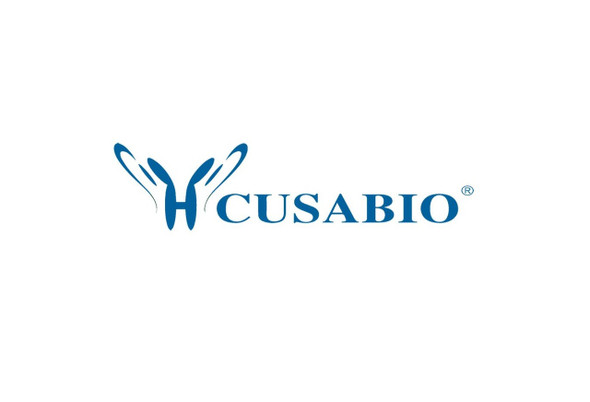Cusabio Human Recombinants
Recombinant Human Nuclear receptor subfamily 2 group F member 6 (NR2F6) | CSB-EP016058HU
- SKU:
- CSB-EP016058HU
- Availability:
- 3 - 7 Working Days
Description
Recombinant Human Nuclear receptor subfamily 2 group F member 6 (NR2F6) | CSB-EP016058HU | Cusabio
Alternative Name(s): V-erbA-related protein 2 Short name: EAR-2
Gene Names: NR2F6
Research Areas: Epigenetics and Nuclear Signaling
Organism: Homo sapiens (Human)
AA Sequence: MAMVTGGWGGPGGDTNGVDKAGGYPRAAEDDSASPPGAASDAEPGDEERPGLQVDCVVCGDKSSGKHYGVFTCEGCKSFFKRSIRRNLSYTCRSNRDCQIDQHHRNQCQYCRLKKCFRVGMRKEAVQRGRIPHSLPGAVAASSGSPPGSALAAVASGGDLFPGQPVSELIAQLLRAEPYPAAAGRFGAGGGAAGAVLGIDNVCELAARLLFSTVEWARHAPFFPELPVADQVALLRLSWSELFVLNAAQAALPLHTAPLLAAAGLHAAPMAAERAVAFMDQVRAFQEQVDKLGRLQVDSAEYGCLKAIALFTPDACGLSDPAHVESLQEKAQVALTEYVRAQYPSQPQRFGRLLLRLPALRAVPASLISQLFFMRLVGKTPIETLIRDMLLSGSTFNWPYGSGQ
Source: E.coli
Tag Info: N-terminal 6xHis-SUMO-tagged
Expression Region: 1-404aa
Sequence Info: Full Length
MW: 59 kDa
Purity: Greater than 90% as determined by SDS-PAGE.
Relevance: Transcription factor predominantly involved in transcriptional repression. Binds to promoter/enhancer response elements that contain the imperfect 5'-AGGTCA-3' direct or inverted repeats with various spacings which are also recognized by other nuclear hormone receptors. Involved in modulation of hormonal responses. Represses transcriptional activity of the lutropin-choriogonadotropic hormone receptor/LHCGR gene, the renin/REN gene and the oxytocin-neurophysin/OXT gene. Represses the triiodothyronine-dependent and -independent transcriptional activity of the thyroid hormone receptor gene in a cell type-specific manner. The corepressing function towards thyroid hormone receptor beta/THRB involves at least in part the inhibition of THRB binding to triiodothyronine response elements (TREs) by NR2F6. Inhibits NFATC transcription factor DNA binding and subsequently its transcriptional activity. Acts as transcriptional repressor of IL-17 expression in Th-17 differentiated CD4+ T cells and may be involved in induction and/or maintenance of peripheral immunological tolerance and autoimmunity. Involved in development of forebrain circadian clock; is required early in the development of the locus coeruleus (LC).
Reference: "Identification of two novel members of erbA superfamily by molecular cloning: the gene products of the two are highly related to each other."Miyajima N., Kadowaki Y., Fukushige S., Shimizu S., Semba K., Yamanashi Y., Matsubara K., Toyoshima K., Yamamoto T.Nucleic Acids Res. 16:11057-11074(1988)
Storage: The shelf life is related to many factors, storage state, buffer ingredients, storage temperature and the stability of the protein itself. Generally, the shelf life of liquid form is 6 months at -20?/-80?. The shelf life of lyophilized form is 12 months at -20?/-80?.
Notes: Repeated freezing and thawing is not recommended. Store working aliquots at 4? for up to one week.
Function: Transcription factor predominantly involved in transcriptional repression. Binds to promoter/enhancer response elements that contain the imperfect 5'-AGGTCA-3' direct or inverted repeats with various spacings which are also recognized by other nuclear hormone receptors. Involved in modulation of hormonal responses. Represses transcriptional activity of the lutropin-choriogonadotropic hormone receptor/LHCGR gene, the renin/REN gene and the oxytocin-neurophysin/OXT gene. Represses the triiodothyronine-dependent and -independent transcriptional activity of the thyroid hormone receptor gene in a cell type-specific manner. The corepressing function towards thyroid hormone receptor beta/THRB involves at least in part the inhibition of THRB binding to triiodothyronine response elements (TREs) by NR2F6. Inhibits NFATC transcription factor DNA binding and subsequently its transcriptional activity. Acts as transcriptional repressor of IL-17 expression in Th-17 differentiated CD4(+) T cells and may be involved in induction and/or maintenance of peripheral immunological tolerance and autoimmunity. Involved in development of forebrain circadian clock; is required early in the development of the locus coeruleus (LC).
Involvement in disease:
Subcellular Location: Nucleus
Protein Families: Nuclear hormone receptor family, NR2 subfamily
Tissue Specificity: Expressed in heart, placenta, liver, skeletal muscle, kidney and pancreas.
Paythway:
Form: Liquid or Lyophilized powder
Buffer: If the delivery form is liquid, the default storage buffer is Tris/PBS-based buffer, 5%-50% glycerol. If the delivery form is lyophilized powder, the buffer before lyophilization is Tris/PBS-based buffer, 6% Trehalose, pH 8.0.
Reconstitution: We recommend that this vial be briefly centrifuged prior to opening to bring the contents to the bottom. Please reconstitute protein in deionized sterile water to a concentration of 0.1-1.0 mg/mL.We recommend to add 5-50% of glycerol (final concentration) and aliquot for long-term storage at -20?/-80?. Our default final concentration of glycerol is 50%. Customers could use it as reference.
Uniprot ID: P10588
HGNC Database Link: HGNC
UniGene Database Link: UniGene
KEGG Database Link: KEGG
STRING Database Link: STRING
OMIM Database Link: OMIM









